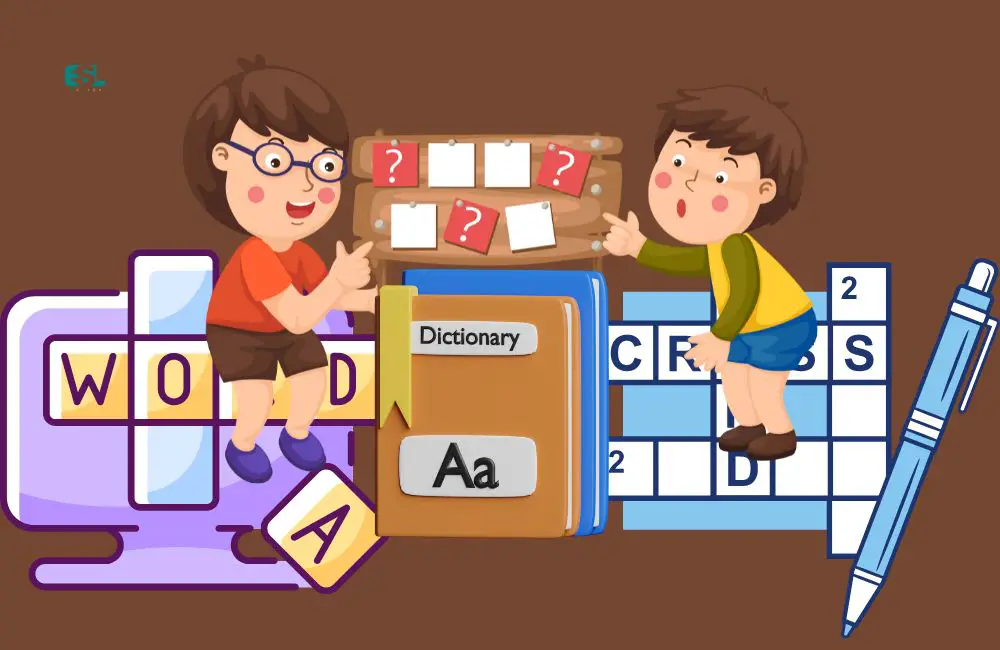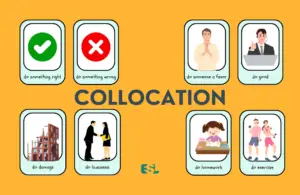Vocabulary development is critical to children’s overall cognitive development, literacy skills, and language acquisition. It serves as the building blocks for communicating, expressing feelings, and understanding complex concepts. But how can parents and caregivers effectively support vocabulary growth in their little ones? Let’s explore.
Vocabulary development in children is a gradual process that begins in infancy & continues throughout childhood. It involves learning and using words to communicate & understand the world. This process significantly impacts children’s reading comprehension, communication skills, & academic success.
If you are searching for an effective English language vocabulary builder, try Word Power Made Easy: The Complete Handbook for Building a Superior Vocabulary (Amazon Link). This time-tested classic has helped millions achieve mastery of English and improve their communication skills in business, the classroom, and in life.
Continue reading this comprehensive guide to explore the stages of vocabulary development, understand its importance, and discover effective strategies that can assist in fostering vocabulary growth in your child. I’ll delve into proven methods and practical tips to make vocabulary development enjoyable and successful.
Table of Contents
- What is Vocabulary Development?
- Importance of Vocabulary Development
- Stages of Children’s Vocabulary Development
- Strategies for Boosting Vocabulary Development
- In Conclusion
What is Vocabulary Development?
Vocabulary development is acquiring the understanding and use of words in a language. It’s an essential aspect of language and literacy development and significantly influences children’s communication skills. Vocabulary development is more than memorizing word definitions; it involves understanding how to use these words effectively and appropriately in various contexts, recognizing multiple meanings of a word, and drawing upon synonyms or antonyms.
This process begins at birth with children’s exposure to language. Initially, they understand words (receptive vocabulary) before using them (expressive vocabulary). It starts with simple sounds, and as children grow older, they learn to understand and use more complex words and phrases. This development continues throughout a person’s life as they get exposed to new words and concepts.
Importance of Vocabulary Development
The role of vocabulary development in a child’s overall cognitive and academic growth cannot be overstated. Here’s why it is crucial:
1. Boosts Reading Comprehension
Reading comprehension is the ability to understand and interpret what is being read. Children with a rich vocabulary can better understand the text they’re reading. Words are the tools we use to access our knowledge, and the more words children know, the better they can comprehend. Reading becomes more enjoyable and engaging for them, encouraging them to read more frequently, which, in turn, further enriches their vocabulary.
2. Improves Communication Skills
A broad vocabulary helps children express their thoughts, feelings, and ideas more effectively and precisely. It allows them to share their experiences and understand others’ experiences, fostering empathy and social connections. They can participate in conversations more confidently and assertively, leading to better social skills.
3. Supports Academic Success
Proficiency in vocabulary is not only beneficial in language-related subjects but is also associated with better performance in other academic areas. For example, understanding specific terms and concepts is critical for learning and demonstrating knowledge in subjects like science and social studies. In mathematics, word problems require a good understanding of vocabulary to interpret and solve them correctly.
Additionally, research has indicated that vocabulary knowledge in early childhood predicts later reading skills and school success. A well-developed vocabulary can also impact children’s ability to think critically, understand complex instructions, and engage in problem-solving activities, leading to better academic performance overall.
Stages of Children’s Vocabulary Development
Children’s vocabulary development unfolds through specific stages, starting from infancy and extending into school years. They progressively understand and use words more effectively during this journey, advancing from simple sounds to more complex sentences. Let’s explore the three primary stages of vocabulary development: Baby Talk (0-12 Months), Rapid Expansion Phase (1-3 Years), and Fluent Speech Stage (3-5 Years).
Stage 1: Baby Talk (0-12 Months)
The initial stage, also known as the pre-linguistic stage, encompasses the first year of a child’s life. Infants communicate primarily through sounds, body language, and facial expressions during this period.
Babbling Phase (6-8 Months)
During this phase, babies start experimenting with vocal sounds, like “baba”, “mama”, “dada”, although they don’t associate these sounds with any meaning yet. It’s a crucial step towards actual speech.
First Words (9-12 Months)
Towards the end of the first year, babies begin to associate sounds with meanings and might start uttering simple words like “mama” or “dada”. These words usually refer to familiar people, objects, or actions.
Stage 2: Rapid Expansion Phase (1-3 Years)
This phase is marked by a remarkable surge in children’s vocabulary. They begin to understand and use more words every day, transforming from mere babbling to more recognizable speech.
Word Burst (18-24 Months)
Around the age of 18 months, many children experience a “vocabulary explosion”, rapidly learning new words, sometimes at a pace of 8-10 words a day. They also start to identify objects, colors, shapes, and can follow simple instructions.
Combining Words (2-3 Years)
As children near their third birthday, they begin to form simple sentences, often two to three words long. Their speech now goes beyond labeling objects to expressing needs, desires, or actions.
Stage 3: Fluent Speech Stage (3-5 Years)
Children typically amassed a substantial vocabulary by this stage and can engage in detailed conversations. They express their thoughts, share experiences, and even narrate simple stories.
Complex Sentences (3-4 Years)
Children now begin to use more complex sentence structures. They start using plurals, past tense, and understand basic rules of grammar.
Mastery of Basic Grammar (4-5 Years)
By age five, most children have mastered the basic rules of grammar. They can understand and use prepositions, pronouns, and more complex tenses. Their sentences become longer, more detailed, and they can engage in extended conversations.
Keep in mind, while these stages serve as a general guideline, every child is unique and may progress at their own pace. Always encourage and support your child’s language development journey; remember – patience is key!
To elevate your vocabulary in just 30 days, I recommend to my students an informative, fun, and accessible guide to utilizing powerful language. Millions of individuals have enhanced their academics, job skills, and confidence by dedicating just fifteen minutes daily to the exercises and tests of 30 Days to a More Powerful Vocabulary (Amazon Link), a top-selling. It offers step-by-step methods to bolster language prowess, discover compelling words, and daily vocabulary enhancement with pronunciation guidance.
Strategies for Boosting Vocabulary Development
Building a strong vocabulary is essential to a child’s learning journey. While children naturally acquire language skills, adults can actively support and enhance their vocabulary development through various strategies. This section explores these strategies, ranging from regular reading and engaging in conversations to playing word games and wisely using technology.
1. Read Regularly
Reading is an incredibly powerful tool in promoting vocabulary development. It exposes children to a rich variety of words, many of which might not be part of everyday conversation. From sparking curiosity to offering context for new words, a regular reading habit nurtures children’s understanding and usage of language. As a parent or caregiver, your role in this process is pivotal, from choosing suitable books to making reading a highly interactive activity.
Choose Age-Appropriate Books
Choosing books that match your child’s age and developmental stage is key to maintaining their interest and fostering comprehension. Board books with bright images and simple words or phrases are perfect for infants and toddlers. These books often use rhyme and repetition, which aids in memory and recognition of words.
Gradually introduce storybooks with more complex vocabulary and plot lines as your child grows. For preschoolers, books about daily routines, animals, or simple narratives are usually a hit. Early readers may enjoy short-chapter books, fairy tales, or informational books about topics they are curious about, like space, nature, or different cultures. Remember, the goal is to make reading a fun and engaging activity.
Examples of age-appropriate books:
- Infants: “Goodnight Moon” by Margaret Wise Brown, “Peek-A Who?” by Nina Laden
- Toddlers: “Brown Bear, Brown Bear, What Do You See?” by Bill Martin Jr. and Eric Carle, “The Very Hungry Caterpillar” by Eric Carle
- Preschoolers: “Where the Wild Things Are” by Maurice Sendak, “The Cat in the Hat” by Dr. Seuss
- Early readers: “Magic Tree House” series by Mary Pope Osborne, “Diary of a Wimpy Kid” series by Jeff Kinney
Interactive Reading
Transform reading from a passive activity into an interactive experience. This practice, known as dialogic reading, promotes vocabulary acquisition and comprehension.
While reading, pause to discuss the story’s illustrations, characters, or events. Ask open-ended questions like “Why do you think the character did that?” or “What do you think will happen next?”. Encourage your child to predict, infer, and connect the story to their experiences.
When you encounter an unfamiliar word, don’t just gloss over it. Instead, talk about the word, explain its meaning in simple terms, and relate it to something your child already knows.
For example, if you come across the word “enormous” in a book, you could say, “Enormous ” means very big. Remember the giant dinosaur we saw at the museum? That was enormous!”
Making reading a two-way conversation enhances vocabulary and stimulates your child’s thinking and listening skills. It turns reading into a shared adventure, full of discoveries and discussions.
2. Engage in Conversations
Conversations provide a natural and rich environment for vocabulary development. When children engage in talks, they are exposed to new words and phrases, enhancing their word knowledge and communication skills.
As a parent or caregiver, you have countless opportunities every day to converse with your child. Each interaction is a chance to enrich your child’s vocabulary, from mealtime chats to bedtime stories. This section will discuss strategies on how to make the most out of these everyday conversation opportunities.
Use Everyday Situations
Daily routines and activities offer abundant opportunities to introduce and reinforce vocabulary. Each situation comes with its unique context, enabling children to learn words relevant to their immediate environment.
For instance, discuss the names of various fruits and vegetables during a grocery shopping trip. “Look, these are bananas. They are yellow. And over there are the red apples.” You could even discuss how they taste or how you can use them in cooking.
While on a walk in the park, point out different objects, animals, and their characteristics. “See the tall oak tree? It has green leaves. And look at that small, brown squirrel. It’s collecting nuts.”
The key is to narrate your actions and surroundings, ask questions, and encourage your child to do the same. This constant verbal interaction introduces new words and provides a context that aids understanding and retention.
Encourage Storytelling
Storytelling is another effective way to expand your child’s vocabulary. Whether it’s recounting a day at school, a family outing, or a scene from their favorite book, storytelling requires the child to use a variety of words and language structures.
Prompt your child to share their experiences or imaginative tales by asking questions like, “What was your favorite part of the day?” or “Can you tell me a story about the adventures of your teddy bear?”
As they narrate, ask follow-up questions to encourage more detailed descriptions. If they’re stuck or struggling with a word, gently provide the word or suggest synonyms.
For example, if your child says, “I had a lot of fun at the park,” you could say, “That’s great! Were you exhilarated when you went down the slide? Was it exciting to swing so high?”
Through storytelling, children learn to express themselves better, enhancing both their vocabulary and narrative skills. It also serves as a bonding activity, creating shared experiences and memories.
3. Play Word Games
Playing word games can significantly bolster vocabulary development in children. Such games make learning new words fun and interactive, thereby reducing the pressure and monotony often associated with learning. Besides, games also provide an opportunity to practice using words and reinforce meanings in a playful and stress-free context.
Whether it’s a simple game of ‘I Spy’ with a toddler or a ‘Scrabble Junior’ round with an older child, word games can fit into your daily routine and offer a beneficial and enjoyable learning way. Let’s dive deeper into how you can incorporate these games into your child’s schedule.
Games for Younger Children
Younger children, such as toddlers and preschoolers, often learn best through play. Games like ‘I Spy’ and ‘Simon Says’ are excellent choices for this age group. They are simple, fun, and naturally expand your child’s vocabulary.
In ‘I Spy,’ you describe something in your immediate environment for your child to find. For instance, “I spy something that is blue and fluffy.” This game helps children associate words with objects, colors, and shapes.
‘Simon Says’ is another engaging game that introduces action words (verbs). This game can be played with instructions like “Simon says, jump high” or “Simon says, touch your nose.” It helps children connect words with actions, expanding their understanding of verbs.
Games for Older Children
Games like crossword puzzles, word searches, Scrabble Junior, and Boggle can be highly engaging for older children who can read and write.
Crossword puzzles and word searches are excellent tools for enhancing spelling and word recognition. You can find a variety of free printable puzzles online tailored to different age groups and themes.
Scrabble Junior and Boggle are board games that promote word formation and spelling skills. While playing, children encounter new words and have fun while learning.
Another enjoyable game for older children is word associations. In this game, a player says a word, and the next player must say a word associated with it. For instance, if the first player says “beach,” the next player might say “sand.” This game encourages children to think about words in terms of their relationships and categories, further deepening their understanding of vocabulary.
Incorporating word games into your child’s playtime can create a positive learning environment that encourages vocabulary development, all while keeping the process fun and enjoyable.
4. Use Technology Wisely
Technology, when used effectively, can greatly assist in vocabulary development. With the advent of numerous educational apps and online resources, learning new words has become more interactive and engaging. However, it’s essential to remember that while technology can be a great aid, it should be used judiciously and complemented with other offline learning activities. This section will discuss how you can use technology to support your child’s vocabulary growth.
Educational Apps
Myriad educational apps are available that specifically focus on enhancing vocabulary and reading skills in children. These apps are designed with interactive games and age-appropriate challenges, making learning enjoyable.
For instance, apps like ‘Endless Alphabet,’ ‘Sight Words Learning Games,’ and ‘Vocab Victor English Word Learning,’ teach children new words through games, animated videos, and fun quizzes. They allow children to learn at their own pace, offering a personalized learning experience.
However, not all apps are created equal, and choosing those that are educational and suitable for your child’s age is important. Always check the content, reviews, and age recommendations before introducing an app to your child.
Online Learning Games and Websites
Aside from apps, many websites offer free vocabulary games and exercises. Websites like ‘Starfall,’ ‘PBS KIDS,’ and ‘Funbrain’ provide a wide range of interactive games that cover various topics, making vocabulary learning enjoyable and relevant.
Furthermore, websites like ‘Storyline Online’ and ‘Unite for Literacy’ offer narrated stories for children, introducing them to new words in a narrative context. These sites often have a read-along feature, which encourages children to read aloud, strengthening their pronunciation and word recognition skills.
In addition to these resources, you can also utilize videos from educational channels on platforms like YouTube to supplement your child’s learning. Just remember to monitor the content for appropriateness.
Balance Technology with Other Activities
While technology can be a beneficial tool, it’s crucial to maintain a balance. Ensure your child also engages in other activities that promote vocabulary development, such as reading physical books, conversing, storytelling, and playing word games.
Set a reasonable time limit for using devices and encourage regular breaks to avoid excessive screen time. This way, you can harness technology’s advantages while promoting healthy habits.
In Conclusion
Vocabulary development is essential to a child’s language acquisition and academic journey. While each child develops at their own pace, a supportive and engaging environment can greatly assist in enhancing their vocabulary. Reading regularly, engaging in enriching conversations, playing word games, and using technology wisely are all effective strategies to encourage vocabulary development.
As parents and educators, our role is not only to provide opportunities for learning but also to create a stimulating environment where children can explore and interact with words. Remember, the goal is to teach children new words and foster a love for language that will serve them for a lifetime.






